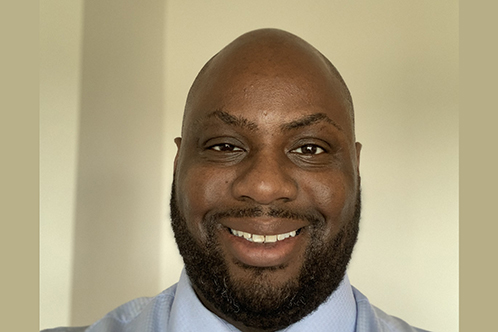Garland Brown has worked for Vital Strategies for just one year and though he has not met most colleagues in person, he is one of the organization’s most widely known team members.
Garland serves as the initial point of contact for the information technology support desk, helping to onboard about 100 new people, including interns, consultants and staff, over the past year and answering around 50 requests and questions from existing employees each week.
Garland’s first task, when he joined in June 2020, was to work through unresolved tickets—requests for help—and resolve any outstanding issues. Garland worked through each of his assigned outstanding tickets and was able to reduce the response time to less than 24 hours. Garland also serves as the administrator to key software that Vital uses.
“I have the flexibility and versatility to assist our colleagues with almost anything,” Garland said. “I am the liaison with IT management, so while they are working on larger projects, I can be that person to handle the day to day and minute by minute. I love it.”
Before he came to Vital Strategies, Garland was an IT support engineer for a tech startup, which has since shut down.
Garland spent the beginning of pandemic with his wife, three sons and mother-in-law in their Bronx apartment, patiently applying for jobs. One day, Garland was driving home from the supermarket, when he got a call from a New York-based phone number. On the other end was Ebony Irby, from Vital’s Human Resources department, who had come across his LinkedIn profile, and introduced him to Vital’s work on public health.
Garland had lost one of his two older brothers to cardiovascular disease and was thrilled to consider the possibility of working for a mission-driven organization, which he had never done before.
“I knew I wanted to be a part of that in some capacity. I was very interested, and it was one of the better decisions I made in my life,” Garland said.
Garland Brown grew up primarily with his mother and two brothers in the South Bronx—one block from Yankee Stadium—except for three years, and every Christmas and summer when he lived with his father’s family in California, where he was surrounded by cousins.
On those California Christmas mornings, when the living room became a sea of wrapping paper and boxes, Garland found his professional calling.
“I always liked to help people out. When they couldn’t set up the video system or the race track, I would take the instruction manual and figure it out.”
Garland was the first person in his immediate family to go to college. He attended community college first, and then went to SUNY Polytechnic Institute in Utica, New York, where he got his bachelor’s degree in computer science.
Garland had planned to find an internship, but his mother passed away when he was 21, forcing him to be entirely independent.
“I was fresh out of college, and it derailed my plans as far as finding internship in the IT field, where I could just learn and work for free. It sped up my life process. I had bills to pay and had to support myself. It shaped me and made me stronger and way more responsible, and my perspective just changed 100%,” he said.
Garland wound up working in sales, because it was easier to immediately find a position, but he eventually circled back to technology.
“I immersed myself in it, and anything I didn’t know, I would read books and take online courses. Once I’m really passionate about something, it becomes addictive and when I don’t know something it drives me to figure it out. I apply myself to figure it out.”
Garland delights in talking to people and in problem solving. One of his most gratifying moments at Vital was helping the COVID-19 Response team figure out how to install OpenRefine software, an open source data management tool, which proved challenging on PC computers. He had to dig into the documentation of the software to find a solution.
In another example, Garland had to figure out how to deploy DocuSign software to 60 people across the organization. It would have been cumbersome and time consuming to do each computer one at a time. Instead, he worked with Chief Technology Officer Daniel Schaefer to deploy a mass silent install all at once.
Garland said the experience made him think more deeply about using cloud computing to deploy software so that, for example, now instead of preloading Microsoft Office or Zoom on every device, IT is working to build the software into the account level on any device, so that IT does not have to do that individual work.
“It is all about efficiency and working smarter, not harder. And every day you have to be forward thinking, not just reactionary. The key is to knock down that incoming volume, where people don’t have those issues to begin with and where things are running smoothly. You know this can happen and you put something in place to prevent it. And then there’s a historical thought process. Why did this happen and what went wrong back then?”
Outside of work, Garland coached youth football for many years, and hopes to return to it. He most enjoyed mentoring the kids and serving as a role model. And he has been busy raising his own three sons—now 23, 17 and 13— who are all entering young adulthood.
“I would like to see all three of my sons grow up to be successful, responsible, caring men. They are all doing separate things and have separate interests, and whatever they choose to do I want them to be good at it and do their best and be great people,” he said. “Then my wife and I can go off into the sunset, and I don’t need anything else.”
